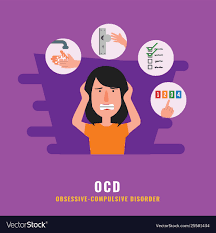SCHIZOPHRENIA
Schizophrenia A serious mental health illness
Schizophrenia was first identified more than a century, but we still don’t know its exact causes. It remains one of the most misunderstood and stigmatized illnesses today. So, let’s walk through what we do know from symptoms to causes and treatments Schizophrenia is considered a syndrome, which means it may encompass a number of related disorders that have similar symptoms but varying causes. Every person with schizophrenia has slightly different symptoms, and the first signs can be easy to miss subtle personality changes, irritability, or a gradual encroachment of unusual thoughts.
Patients are usually diagnosed after the onset of psychosis. which typically occurs in the late teens or early twenties for men and the late twenties or early thirties for women. A first psychotic episode can feature delusions, hallucinations, and disordered speech and behavior. These are called positive symptoms, meaning they occur in people with schizophrenia but not in the general population. It’s a common misperception that people with schizophrenia have multiple personalities, but these symptoms indicate a disruption of thought processes, rather than the manifestation of another personality. Schizophrenia also has negative symptoms, these are qualities that are reduced in people with schizophrenia, such as motivation, expression of emotion, or speech. There are cognitive symptoms as well, like difficulty concentrating, remembering information, and making decisions.
So what causes the onset of psychosis? There likely isn’t one single cause, but a combination of genetic and environmental risk factors that contribute. Schizophrenia has some of the strongest genetic links of any psychiatric illness. Though about 1% of people have schizophrenia, children or siblings of people with schizophrenia are ten times likelier to develop the disease, and an identical twin of someone with schizophrenia has a 40% chance of being affected. Often, immediate relatives of people with schizophrenia exhibit milder versions of traits associated with the disorder but not to an extent that requires treatment. Multiple genes almost certainly play a role, but we don’t know how many, or which ones. Environmental factors like exposure to certain viruses in early infancy might increase the chance that someone will develop schizophrenia, and use of some drugs, including marijuana, may trigger the onset of psychosis in highly susceptible individuals. These factors don’t affect everyone the same way. For those with very low genetic risk, no amount of exposure to environmental risk factors will lead them to develop schizophrenia; for those with very high risk, moderate additional risk might tip the balance.
The antipsychotic drugs used to treat schizophrenia have helped researchers work backwards to trace signatures of the disorder in the brain. Traditional antipsychotics block dopamine receptors. They can be very effective in reducing positive symptoms, which are linked to an excess of dopamine in particular brain pathways but the same drugs can make negative symptoms worse, and we’ve found that negative symptoms of schizophrenia may be tied to too little dopamine in other brain areas. Some people with schizophrenia show a loss of neural tissue, and it’s unclear whether this atrophy is a result of the disease itself or drug-induced suppression of signaling. Fortunately, newer generations of antipsychotics aim to address some of these issues by targeting multiple neurotransmitters, like serotonin in addition to dopamine. It’s clear that no one transmitter system is responsible for all symptoms, and because these drugs affect signaling throughout the brain and body, they can have other side effects like weight gain.
In spite of these complications, antipsychotics can be very effective, especially when combined with other interventions like cognitive-behavioral therapy. Electroconvulsive therapy, though it provides relatively short-lived relief, is also re-emerging as an effective treatment, especially when other options have failed. Early intervention is also extremely important. After months or years of untreated psychosis, certain psychoses can become embedded in someone’s personality and yet, the dehumanizing stigma attached to this diagnosis can prevent people from seeking help.
People with schizophrenia are often perceived as dangerous, but are actually much more likely to be the victims of violence than the perpetrators and proper treatment may help reduce the likelihood of violence associated with schizophrenia. That’s why education for patients, their families, and their communities helps erode the stigma and improves access to treatment.



Comments
Post a Comment